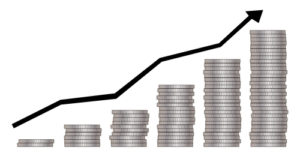 The FHA announced that they will raise loan limits for 2017. Here are 20 quick facts any realtor, homebuyer or mortgage applicant should know:
The FHA announced that they will raise loan limits for 2017. Here are 20 quick facts any realtor, homebuyer or mortgage applicant should know:
- The Federal Housing Administration recently announced that it will increase its loan limits for FHA loan products in 2017, reflecting increased home prices across the United States.
- In fact, FHA will increase its national “floor” loan limit in 2017 to $275,665, up from $271,050 in 2016.
- Additionally, FHA will also expand their national “ceiling” for high-cost areas to $636,150 in 2017, up from $625,500 last year.
- Where does the FHA come up with these numbers? They represent a set percentage of the national conforming loan limit, set by HUD based on median home prices.
- The FHA loan “floor” is based on 65% of that conforming loan limit, and the FHA “ceiling” represents 150% of the conforming loan limit.
- While these are just the floor and ceiling loan amounts, in all other areas, the loan limit will be calculated at 115 percent of the median home price within the county as fixed by HUD.
- The FHA sets their loan limits higher than the median value of homes in an area on purpose, enabling home buying for modest-income and middle-class families.
- Areas where the median home value sits above that confirming loan limit are considered “high-cost” areas and may be granted an FHA exception for higher loan limits.
- These conforming loan limits are based on the maximum mortgage amount that government-sponsored enterprises (GSEs) Fannie Mae and Freddie Mac can buy or guarantee loans.
- But that means certain areas in the country where homes were typically much higher than the conforming median (like California) were often excluded from FHA loans.
- The other option for homeowners with higher-priced homes are typically getting non-conforming or jumbo loans, which come with additional scrutiny, paperwork and often higher rates and cost.
- In fact, the FHA loan program has never aimed to serve all homeowners equally, but originally formed in order to support low- and moderate-income home buyers with low down payments and other concessions to help them get a home loan.
- FHA also announced that it will raise the loan limit set for FHA-insured Home Equity Conversion Mortgages (reverse mortgages) to $636,150, which will be uniform across the United States.
- These loan limits correspond to 1-unit, or single family homes, with additional marginal loan limit increases for duplexes, triplexes, and so on.
- This marks the first time conforming (or conventional) loan limits were increased since 2006.
- These new FHA loan limits will be effective immediately for all loans issued as of January 1, 2017.
- Since loan limits are set by metropolitan and county statistics, FHA reports that their maximum loan limits will increase in 2,948 counties in the U.S., remain the same in 286 counties, and not go down in any counties.
- What effect could this have on the housing market? Analysts expect the higher limits to significantly increase FHA lending volume. In fact, a report from Black Knight Financial Services estimates that every $10,000 increase to the conforming loan limit will lead to 40,000 additional FHA originations, brining $20 billion in new loans.
- The California Association of Realtors also applauded the move as beneficial to our state and local housing markets. “C.A.R. applauds FHFA Director Mel Watt for raising the existing Fannie Mae and Freddie Mac conforming loan limits,” said C.A.R. President Geoff McIntosh. “Which will provide stability and certainty to the housing market and give tens of thousands of California homebuyers a chance at homeownership.”
- In California, many areas like Oakland and Hayward are expected to benefit from these higher FHA ceilings and conforming loan limits. Locally, several areas in Roseville, the Arden area, and Placer County in particular should benefit from the increased loan limits.
